
Living in San Antonio means enjoying warm weather throughout the year, but it also means dealing with scorching hot summers. The city experiences long, hot summers with high temperatures and intense sunlight, which can pose challenges for certain dog breeds that may struggle to regulate their body temperature or are more susceptible to heat-related issues. If you’re a resident considering welcoming a new dog to the family, it’s crucial to choose a breed that can handle the heat. By keeping hot weather in mind when selecting a breed, you can ensure a better match between your lifestyle, the local climate, and your new furry companion.
The breeds below are known for their heat tolerance, adaptability, and ability to stay cool, making them ideal companions for hot Texas summers. But before we get to the full list of breed recommendations, let’s talk about how dogs stay cool and what exactly makes a dog more suitable for hot temperatures.
This post may contain affiliate links. By purchasing through them you can help support dog-friendly resources at no extra cost to you!
Table of Contents
How Your Dog Stays Cool + How You Can Help Them
Dogs have remarkable ways of staying cool when the temperatures rise. Their ability to regulate body temperature and seek relief from the heat is a testament to their resilience. Understanding how dogs stay cool is crucial for responsible pet owners, as it enables them to provide the necessary care and ensure their canine companions’ well-being during hot weather. From panting to seeking shade, let’s explore the various methods dogs employ to beat the heat and stay comfortable—and how we can help them with the challenges of warmer weather while keeping them safe and cool.
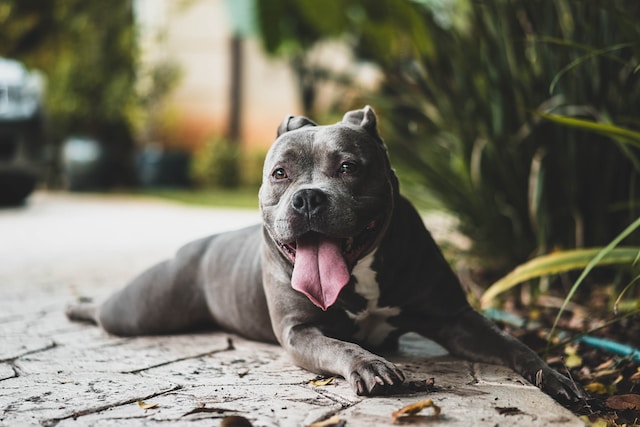
1. Panting
Dogs regulate their body temperature through panting. This rapid, shallow breathing helps evaporate moisture from their tongue and respiratory tract, cooling them down.
2. Sweat Glands
Unlike humans, dogs have sweat glands primarily on their paw pads. Sweating through their paws releases a minimal amount of moisture, but it can contribute to cooling.
3. Seeking Shade
Dogs instinctively seek out shady areas during hot weather to avoid direct sunlight and find relief from the heat.
4. Water and Hydration
Dogs need access to fresh water at all times, especially in hot weather. Drinking water helps them stay hydrated and cool from the inside out.
5. Cooling Pads or Mats
Some pet owners provide cooling pads or mats for their dogs to lie on. These specialized products absorb and dissipate heat, providing a cooling effect.
6. Cooling Vests or Bandanas
These accessories are designed to be soaked in water and worn by dogs. The evaporation of the water on the fabric helps to cool their body temperature.
7. Limited Exercise in Heat
Dogs should have their exercise limited during the hottest parts of the day. Engaging in physical activity during cooler morning or evening hours helps prevent overheating.
8. Proper Grooming
Regular grooming, including brushing and removing excess fur, helps dogs maintain proper air circulation through their coats. Trimming long hair can also provide relief from heat.
9. Avoiding Hot Surfaces
Dogs should be kept away from hot surfaces like asphalt or concrete, as these can quickly heat up and burn their paws. Opting for grassy or shaded areas is safer.
10. Monitoring Behavior
Pay attention to signs of overheating in dogs, such as excessive panting, drooling, lethargy, or seeking cool surfaces. If your dog shows these signs, it’s important to take immediate measures to cool them down and seek veterinary assistance if necessary.
By understanding these cooling mechanisms and taking proactive measures, dog owners can help their furry companions stay comfortable and safe in hot weather conditions.
Characteristics That Make a Dog Suitable for Hot Weather
When it comes to thriving in hot weather, certain characteristics make a dog well-suited for the challenge. From coat length and body size to heat resistance and behavior, these traits play a crucial role in determining a dog’s ability to cope with higher temperatures. Understanding the characteristics that make a dog suitable for hot weather not only helps us choose the right breed but also guides us in providing the necessary care and precautions during scorching summer months. Below are some key characteristics of the best dogs for warm temperatures that contribute to their comfort and well-being in hot weather conditions.
1. Coat Length and Type
Dogs with shorter coats or those with hair that is lighter in color tend to be more heat-tolerant. Short coats allow for better heat dissipation and minimize the risk of overheating. Additionally, breeds with thinner or single-layered coats tend to fare better in hot climates as they don’t trap heat close to their bodies.
2. Body Size and Build
Dogs with a lean and athletic build tend to be more equipped to handle hot weather. A smaller body size means less surface area for heat absorption, while a well-muscled and proportionate physique allows for efficient heat regulation. Bulky or heavy-set dogs may struggle more with heat due to their higher potential for insulation.
3. Snout Size and Length
A dog’s snout plays a crucial role in how it handles heat. Dogs with longer snouts like Greyhounds and German Shepherds have better airflow and more efficient panting, making them more adaptable to hot conditions. Breeds with shorter snouts, such as brachycephalic dogs like Bulldogs, Pugs, and Boxers, may face challenges in the heat. Their short muzzles restrict airflow, making it more difficult for them to cool down through panting. These breeds are more susceptible to heat exhaustion or heat stroke and may have a harder time dissipating heat from their bodies.
4. Heat Dissipation Mechanisms
Some breeds have specific adaptations that help them stay cool in hot weather. For example, dogs with long, floppy ears, like the Basset Hound, can use their ears to regulate their body temperature. Breeds with shorter noses, such as the Basenji or Whippet, have an advantage as their airways are less obstructed, allowing for easier breathing and heat dissipation.
5. Heat Resistance
Certain dog breeds have evolved in warmer climates and have developed natural heat resistance. These breeds are better equipped to handle prolonged exposure to heat and high temperatures. Examples include the Saluki, Afghan Hound, and Pharaoh Hound, which have been bred in desert regions.
6. Activity Level and Exercise Needs
Dogs with lower energy levels and exercise requirements tend to be more adaptable to hot weather. While it’s important for all dogs to receive regular exercise, breeds that are content with shorter walks or have a more relaxed temperament can better cope with limited physical activity during the hottest parts of the day.
7. Water Appreciation
Some breeds have a natural affinity for water and enjoy activities like swimming or playing in the water. These dogs can cool down easily by taking a dip or staying near a water source, which helps regulate their body temperature in hot weather. Breeds such as Retrievers, Setters, and Spaniels often display a love for water.
8. Heat Tolerance and Behavior
Certain individual dogs may have a higher tolerance for heat, regardless of breed. Observing a dog’s behavior in warm weather can provide insights into their comfort level. Dogs that actively seek out shade, lie on cool surfaces, or reduce their activity level during hot weather are likely more heat-tolerant.
Remember, even dogs that are considered suitable for hot weather still require proper care and precautions in extreme heat. Ensure that they have access to shade, plenty of water, and never leave them unattended in a parked vehicle. Regular grooming to remove excess hair and using dog-safe sunscreen on exposed skin can also be beneficial. By considering these characteristics and taking appropriate measures, you can ensure your furry friend stays comfortable and safe during the hot weather months.
Dogs That Are Best Suited for Colder Climates
There are several dog breeds that are known for being well-suited to cooler climates. Here are a few examples:
1. Siberian Husky
Originally bred in the cold and snowy regions of Siberia, these dogs have a thick double coat that provides insulation against freezing temperatures.
2. Alaskan Malamute
Another Arctic breed, Alaskan Malamutes have a thick, heavy coat that protects them from extreme cold. They are bred for pulling heavy loads in harsh conditions.
3. Bernese Mountain Dog
This large and sturdy breed originates from the Swiss Alps and excels in colder climates. Their thick, long coat helps keep them warm in chilly weather.
4. Newfoundland
Originally bred for water rescue in the icy waters of Newfoundland, Canada, these dogs have a dense, water-resistant coat and webbed feet to aid in swimming and staying warm.
5. Saint Bernard
Famous for their rescue work in the snowy Alps, Saint Bernards have a thick, insulating coat and a gentle nature that makes them well-suited to colder environments.
6. Samoyed
Originating from Siberia, Samoyeds have a luxurious, dense white coat that protects them from cold temperatures. Their friendly and adaptable nature makes them popular in various climates.
7. Shetland Sheepdog
Despite their smaller size, Shetland Sheepdogs have a thick double coat that provides insulation in colder weather. They are agile and energetic herding dogs.
These breeds have adaptations such as thick fur, insulating coats, and other characteristics that help them thrive in colder climates. However, it’s important to note that each dog is an individual, and factors such as their overall health, conditioning, and acclimation to the climate should also be considered when determining their suitability for a specific environment.
The Best Hot Weather Dogs
1. Chihuahua
Chihuahuas are small and lightweight, making them well-suited for hot weather. Their compact size allows them to stay cool and comfortable even on the hottest days. Originating in Mexico, they’re well-suited for hot weather due to their small size, short coat, adaptation to warm climates, and behavior of seeking shade, These factors enable them to dissipate heat efficiently and stay comfortable in hot weather conditions.
2. Basenji
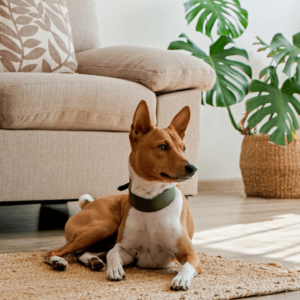 Basenji dogs, originating from Central Africa, are well-suited for hot climates. With their short hair and sleek coat, they can handle warm weather more comfortably compared to breeds with longer or denser coats. Their minimal grooming needs make them low-maintenance in terms of coat care. Basenjis’ adaptability to hot climates, allows them to thrive in areas with high temperatures, making them suitable companions for individuals living in hot climates.
Basenji dogs, originating from Central Africa, are well-suited for hot climates. With their short hair and sleek coat, they can handle warm weather more comfortably compared to breeds with longer or denser coats. Their minimal grooming needs make them low-maintenance in terms of coat care. Basenjis’ adaptability to hot climates, allows them to thrive in areas with high temperatures, making them suitable companions for individuals living in hot climates.
3. Italian Greyhound
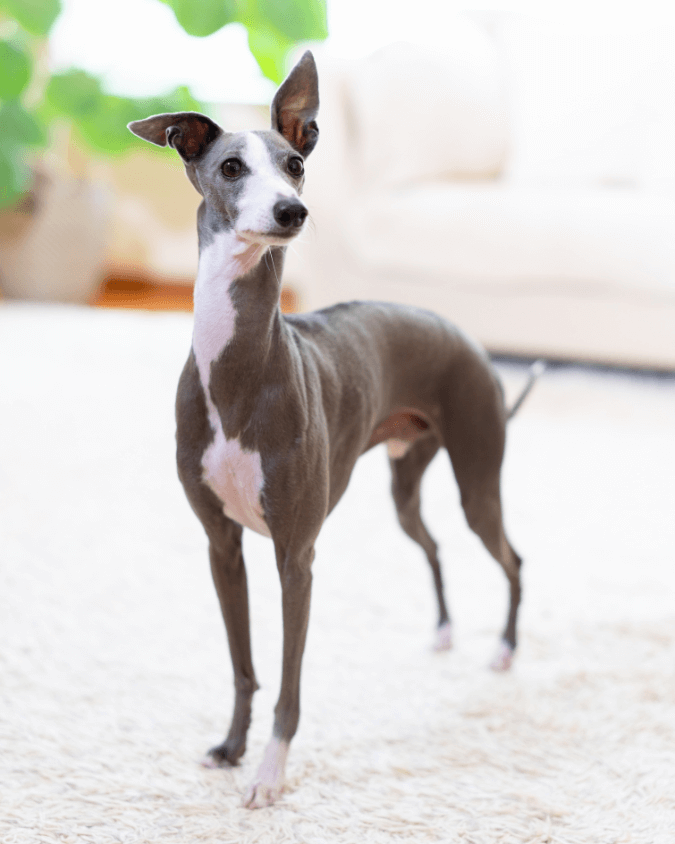 Italian Greyhounds, originating from Italy, possess physical characteristics that make them well-suited for hot weather. With their thin coat and slender build, they have a natural advantage in warm climates. The short and fine hair of Italian Greyhounds allows for better heat dissipation, helping them stay cool in hot weather. While they enjoy basking in the sun, it’s important to protect them from prolonged exposure to avoid sunburn, as their thin coat provides little protection against harmful UV rays. Providing shade and limiting their time under direct sunlight can help ensure their comfort and safety in hot weather. Overall, Italian Greyhounds are a breed that can gracefully navigate the heat while still enjoying outdoor activities.
Italian Greyhounds, originating from Italy, possess physical characteristics that make them well-suited for hot weather. With their thin coat and slender build, they have a natural advantage in warm climates. The short and fine hair of Italian Greyhounds allows for better heat dissipation, helping them stay cool in hot weather. While they enjoy basking in the sun, it’s important to protect them from prolonged exposure to avoid sunburn, as their thin coat provides little protection against harmful UV rays. Providing shade and limiting their time under direct sunlight can help ensure their comfort and safety in hot weather. Overall, Italian Greyhounds are a breed that can gracefully navigate the heat while still enjoying outdoor activities.
4. Dalmatian
Dalmatians, with their short coats and distinctive spots, are well-suited for warm climates. Their energetic nature makes them ideal for outdoor activities during the cooler parts of the day, while their coat provides some protection against the sun.
5. Whippet
 Whippets, originating from England, possess physical characteristics that make them well-suited for hot weather. With their lean and athletic build, they have an efficient heat dissipation mechanism that helps them tolerate warmer temperatures. Their short coat contributes to better heat regulation, reducing the risk of overheating. Whippets’ origins as coursing dogs, bred for high-speed pursuits, have endowed them with a natural agility that allows them to engage in bursts of activity and then rest to cool down. These traits make Whippets an excellent choice for individuals living in hot climates, as they can comfortably enjoy outdoor activities while staying cool.
Whippets, originating from England, possess physical characteristics that make them well-suited for hot weather. With their lean and athletic build, they have an efficient heat dissipation mechanism that helps them tolerate warmer temperatures. Their short coat contributes to better heat regulation, reducing the risk of overheating. Whippets’ origins as coursing dogs, bred for high-speed pursuits, have endowed them with a natural agility that allows them to engage in bursts of activity and then rest to cool down. These traits make Whippets an excellent choice for individuals living in hot climates, as they can comfortably enjoy outdoor activities while staying cool.
6. Vizsla
Vizslas have a short and smooth coat, which helps them cope with high temperatures. They are energetic dogs and require regular exercise, so early morning or late evening walks are recommended during San Antonio summers.
7. Greyhound
Greyhounds, originating from ancient Egypt, possess physical characteristics that make them well-suited for hot weather. With their sleek body and short coat, they have efficient heat dissipation capabilities, allowing them to stay cool in warm climates. Their lean and muscular build helps in dissipating heat, making them more tolerant of higher temperatures compared to breeds with heavier builds or thicker coats. Greyhounds’ origins as ancient hunting and racing dogs have shaped their physical attributes, enabling them to excel in speed and agility.
8. Australian Cattle Dog
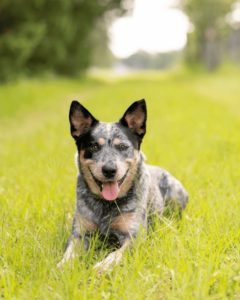 Australian Cattle Dogs, also known as Blue Heelers or Queensland Heelers, originated in Australia. The Australian Outback, where these dogs were primarily bred, can reach extremely high temperatures during the summer months, often exceeding 100°F (38°C) or more. These demanding conditions required dogs that could withstand heat, work tirelessly, and effectively manage livestock in challenging terrain. Australian Cattle Dogs have a short, dense coat that protects them from both heat and cold.
Australian Cattle Dogs, also known as Blue Heelers or Queensland Heelers, originated in Australia. The Australian Outback, where these dogs were primarily bred, can reach extremely high temperatures during the summer months, often exceeding 100°F (38°C) or more. These demanding conditions required dogs that could withstand heat, work tirelessly, and effectively manage livestock in challenging terrain. Australian Cattle Dogs have a short, dense coat that protects them from both heat and cold.
9. Pharaoh Hound
The Pharaoh Hound has a short, glossy coat that reflects sunlight. They are known for their ability to tolerate heat and their remarkable speed.
10. Rhodesian Ridgeback
Originally bred in Africa, Rhodesian Ridgebacks have a dense and short coat that provides insulation against heat. They are strong and active dogs that enjoy outdoor activities.
11. Basque Shepherd
Basque Shepherds have a weather-resistant double coat, making them adaptable to various climates. They can handle the heat, but proper hydration and shade are necessary during hot days.
12. Boxer
Boxers have a short coat and a muscular build, making them suitable for warm climates. However, they can be prone to sunburn, so it’s important to protect them from direct sunlight. Sunscreen made just for dogs is a great thing to keep on hand if you have a light-colored boxer.
13. Afghan Hound
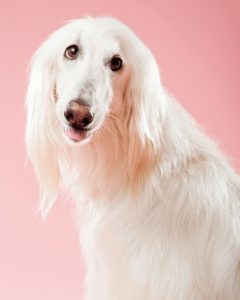 Despite their luxurious coat, Afghan Hounds can handle hot weather well due to their unique coat structure. The long hair on top acts as insulation, while the thinner coat underneath allows heat to escape. In their native Afghanistan, temperatures can range from scorching hot in the summer to bitterly cold in the winter, showcasing the Afghan Hound’s adaptability to varying climates.
Despite their luxurious coat, Afghan Hounds can handle hot weather well due to their unique coat structure. The long hair on top acts as insulation, while the thinner coat underneath allows heat to escape. In their native Afghanistan, temperatures can range from scorching hot in the summer to bitterly cold in the winter, showcasing the Afghan Hound’s adaptability to varying climates.
14. Great Dane
Great Danes have a short, smooth coat that helps with heat dissipation, allowing air to circulate close to the skin. This helps them stay relatively cooler compared to breeds with longer or thicker coats. Additionally, their large size contributes to a lower surface area-to-volume ratio, reducing the amount of body heat retained. Their long legs and lean build aid in efficient heat dispersion as well.
15. American Foxhound
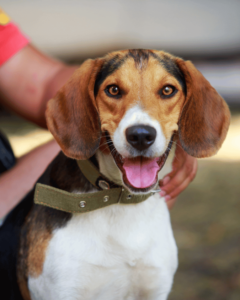 American Foxhounds are well-suited for hot weather due to their short and dense coat, which aids in heat dissipation. Their lean and muscular build contributes to their heat tolerance, and their large, thin ears help release excess body heat.
American Foxhounds are well-suited for hot weather due to their short and dense coat, which aids in heat dissipation. Their lean and muscular build contributes to their heat tolerance, and their large, thin ears help release excess body heat.
16. Australian Terrier
 The Australian Terrier has a weather-resistant coat that protects them from heat and keeps them comfortable in hot weather. Their dense and wiry outer coat acts as insulation, shielding them from the sun’s rays. This unique coat combination allows Australian Terriers to stay cool in warm climates. They are adaptable, active, and make great companions for outdoor activities. With proper shade and hydration, Australian Terriers thrive in San Antonio’s hot weather.
The Australian Terrier has a weather-resistant coat that protects them from heat and keeps them comfortable in hot weather. Their dense and wiry outer coat acts as insulation, shielding them from the sun’s rays. This unique coat combination allows Australian Terriers to stay cool in warm climates. They are adaptable, active, and make great companions for outdoor activities. With proper shade and hydration, Australian Terriers thrive in San Antonio’s hot weather.
17. Beagle
Beagles are a breed that can handle hot weather with relative ease. Their short and dense coat helps them stay cool by allowing heat to dissipate efficiently.
18. Bull Terrier
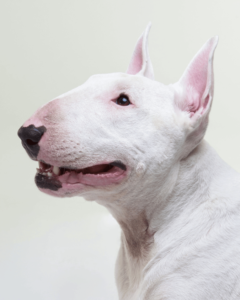 Bull terriers are known for their short, smooth coat, which makes them well-suited for hot weather climates. Their coat does not trap heat, which helps them to stay cool even in hot, humid weather. Bull terriers are also relatively active dogs, which helps them to burn off excess heat.
Bull terriers are known for their short, smooth coat, which makes them well-suited for hot weather climates. Their coat does not trap heat, which helps them to stay cool even in hot, humid weather. Bull terriers are also relatively active dogs, which helps them to burn off excess heat.
20. Doberman Pinscher
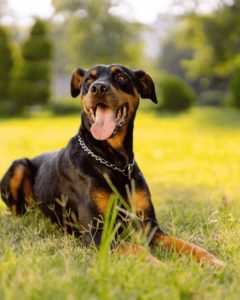 Doberman Pinschers are not as well-suited for hot weather as some other breeds, but they can tolerate it with some care. They have a short, smooth coat that does not trap heat, and they are relatively active dogs, which helps them to stay cool. However, they are also large dogs with a lot of muscle mass, which means that they can generate a lot of heat. This can make them susceptible to heat stroke if they are not properly cooled down.
Doberman Pinschers are not as well-suited for hot weather as some other breeds, but they can tolerate it with some care. They have a short, smooth coat that does not trap heat, and they are relatively active dogs, which helps them to stay cool. However, they are also large dogs with a lot of muscle mass, which means that they can generate a lot of heat. This can make them susceptible to heat stroke if they are not properly cooled down.
21. German Shorthaired Pointer
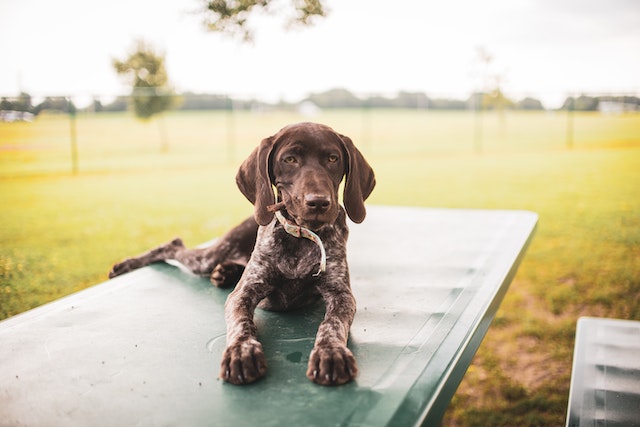
German Shorthaired Pointers have a short coat and a lean build that aids in heat dissipation. They are energetic and enjoy outdoor activities, but hydration and shade are crucial during hot weather.
22. Jack Russell Terrier
 Jack Russell Terriers have a smooth and short coat, making them comfortable in warm climates. They have high energy levels and thrive with regular exercise and mental stimulation.
Jack Russell Terriers have a smooth and short coat, making them comfortable in warm climates. They have high energy levels and thrive with regular exercise and mental stimulation.
23. Labrador Retriever
Labradors have a short, water-resistant coat and are known for their love of water. They handle heat well but should be monitored during intense activities in hot weather.
24. Mexican Hairless (Xoloitzcuintli)
 The Xoloitzcuintli, available in three sizes, is a hairless breed naturally suited for hot climates. Their lack of hair reduces the risk of overheating, but their exposed skin is sensitive to the sun. Sunscreen and access to shade are crucial to protect their skin from sunburn.
The Xoloitzcuintli, available in three sizes, is a hairless breed naturally suited for hot climates. Their lack of hair reduces the risk of overheating, but their exposed skin is sensitive to the sun. Sunscreen and access to shade are crucial to protect their skin from sunburn.
25. Pointer
Pointers are good for hot weather because they have a short, smooth coat that does not trap heat. They are also relatively active dogs, which helps them to stay cool. Pointers originated in Germany, where they were originally used for hunting. Their short coats and active lifestyles make them well-suited for hot weather climates.
26. Saluki

Salukis are one of the oldest dog breeds in the world, with their history dating back to at least 7,000 BC. They were originally bred in the Middle East, where they were used for hunting gazelle and other small game in hot desert climates. Salukis are known for their speed and endurance, and they are able to run for long distances at high speeds. Their short, fine coat does not trap heat, which helps them to stay cool in hot weather.
27. Staffordshire Bull Terrier
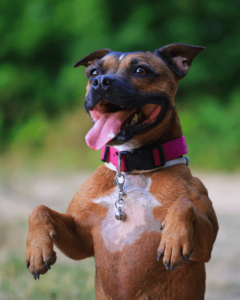 Staffordshire Bull Terriers, also known as Staffies, are good for hot weather because they have a short, smooth coat that does not trap heat. They are also relatively active dogs, which helps them to stay cool. Staffies originated in the English Midlands in the 19th century, where they were bred as fighting dogs. However, they were later bred to be more docile and companionable pets.
Staffordshire Bull Terriers, also known as Staffies, are good for hot weather because they have a short, smooth coat that does not trap heat. They are also relatively active dogs, which helps them to stay cool. Staffies originated in the English Midlands in the 19th century, where they were bred as fighting dogs. However, they were later bred to be more docile and companionable pets.
28. Weimaraner
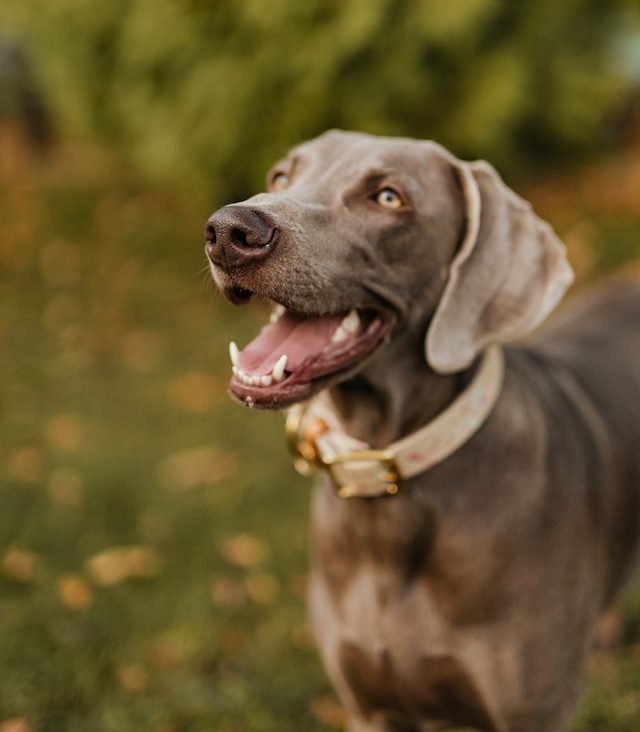 Weimaraners are good for hot weather because they have a short, smooth coat that does not trap heat. They are also relatively active dogs, which helps them to stay cool. Weimaraners originated in Germany in the 19th century, where they were bred as hunting dogs. They were originally used to track down large game, such as deer and boar.
Weimaraners are good for hot weather because they have a short, smooth coat that does not trap heat. They are also relatively active dogs, which helps them to stay cool. Weimaraners originated in Germany in the 19th century, where they were bred as hunting dogs. They were originally used to track down large game, such as deer and boar.
When choosing a dog breed for the hot weather months in San Antonio, it’s important to consider their heat tolerance, coat length, and activity levels. The breeds mentioned in this blog post have demonstrated the ability to handle hot weather and provide companionship during the scorching summer days. Remember to prioritize shade, hydration, and monitoring your dog’s behavior to ensure their well-being in the heat.
Products to Help Your Dog Stay Cool
In addition to choosing a dog breed that is well-suited for hot weather, there are a number of products that you can use to help your dog stay cool in the summer heat. These products can help to keep your dog hydrated, regulate their body temperature, and protect their skin from the sun’s harmful rays.
- Cooling mats or pads — These products are specifically designed to help dogs stay cool in hot weather. They are usually made of a material that absorbs and retains body heat, and they can be placed in a variety of locations, such as the floor, a dog bed, or a car seat.
 Cooling vests or bandanas — These products are also designed to help dogs stay cool in hot weather. They are typically made of a material that evaporates, cooling the dog’s body as it does so while keeping your dog dry, too.
Cooling vests or bandanas — These products are also designed to help dogs stay cool in hot weather. They are typically made of a material that evaporates, cooling the dog’s body as it does so while keeping your dog dry, too. Water bowls —It is important to make sure that your dog has access to fresh, cool water at all times, especially in hot weather. You may want to consider investing in a water bowl that is specifically made of a material that keeps water cool.
Water bowls —It is important to make sure that your dog has access to fresh, cool water at all times, especially in hot weather. You may want to consider investing in a water bowl that is specifically made of a material that keeps water cool. Dog-safe sunscreen — If your dog will be spending a lot of time outdoors in hot weather, you may want to consider using dog-safe sunscreen. This will help protect your dog’s skin from the sun’s harmful rays.
Dog-safe sunscreen — If your dog will be spending a lot of time outdoors in hot weather, you may want to consider using dog-safe sunscreen. This will help protect your dog’s skin from the sun’s harmful rays.
These are just a few of the many products that can help your hot dog breed stay cool in hot weather. By taking the necessary precautions and providing your dog with the proper care, you can help them stay safe and comfortable during the summer months.
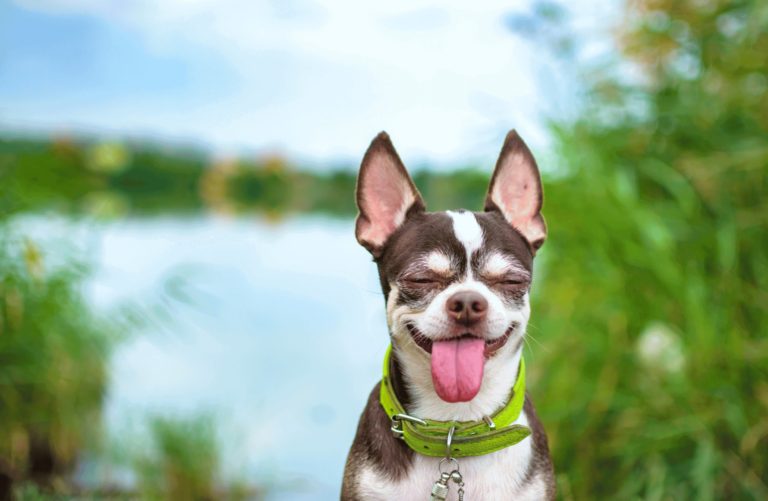
28 Best Dog Breeds for Hot Weather Months in San Antonio
Living in San Antonio means enjoying warm weather throughout the year, but it also means dealing with scorching hot summers. The city experiences long, hot summers with high temperatures and

2023 Dog-Friendly Guide to Summer in San Antonio
Hot DAWG summer is here, and that means patios, and rivers, and triple digits to boot! Despite the heat, the summer months in San Antonio can be a great time
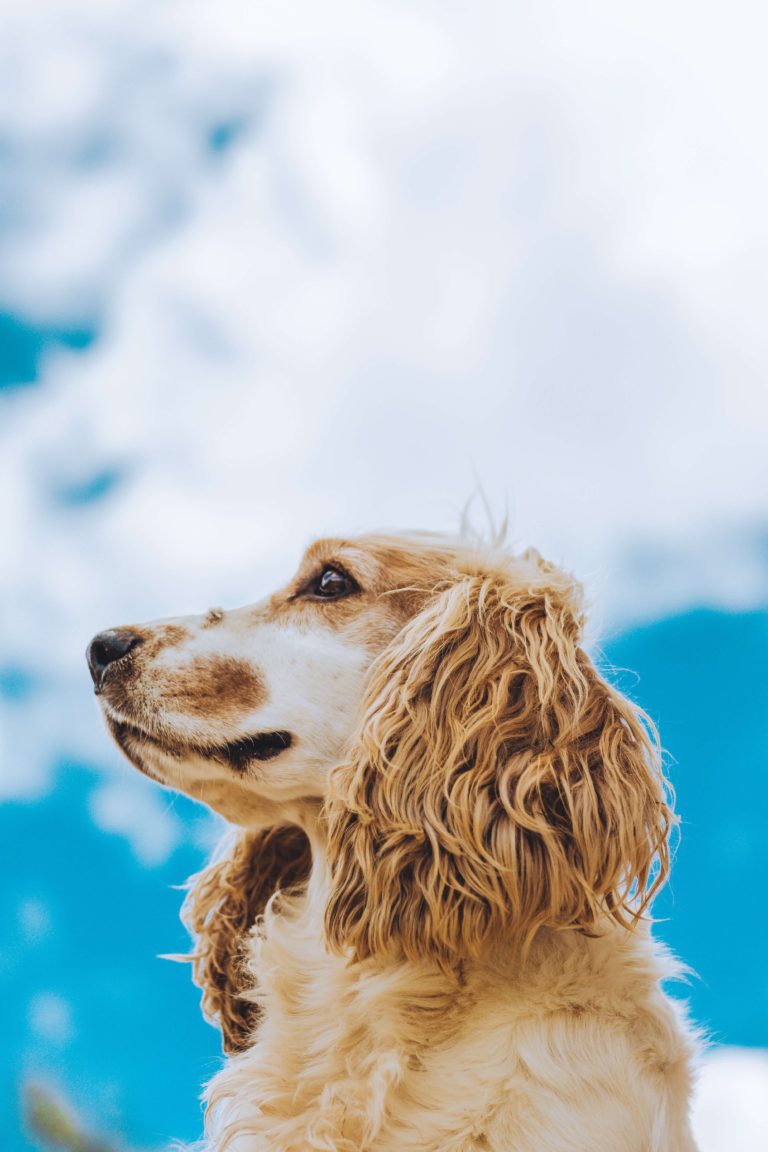
The Best Free Things to do with Your Dog in San Antonio This Summer
Looking for free things to do with your dog this summer? Look no further! The City of San Antonio has a variety of activities that both you and your furry
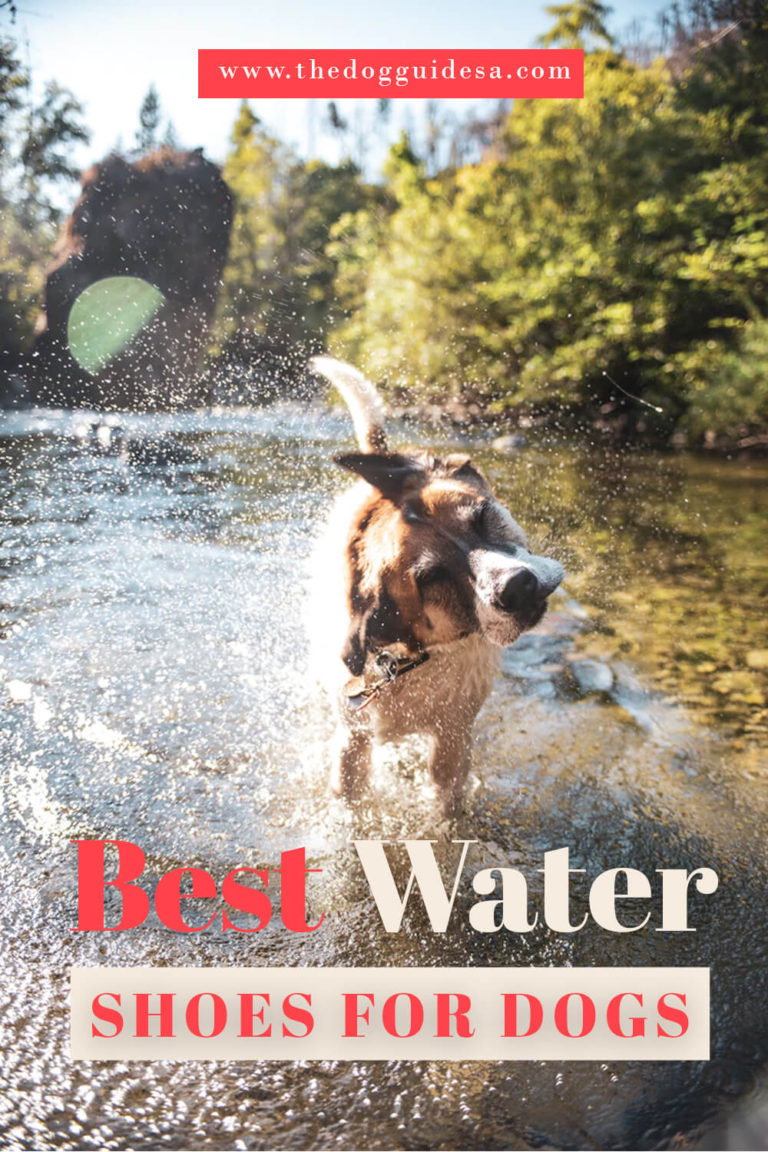
The 16 Best Water Shoes for Dogs
Is your dog the type that loves to romp in puddles and streams? Or maybe you have a pup who is recovering from an injury and needs extra protection on

The 17 Best Off-Leash Dog Parks in San Antonio (2022)
We’re all about taking our pups to the farmers market, happy hour, and even the bookstore, but there’s nothing quite like letting Fido run free. Fortunately there are a
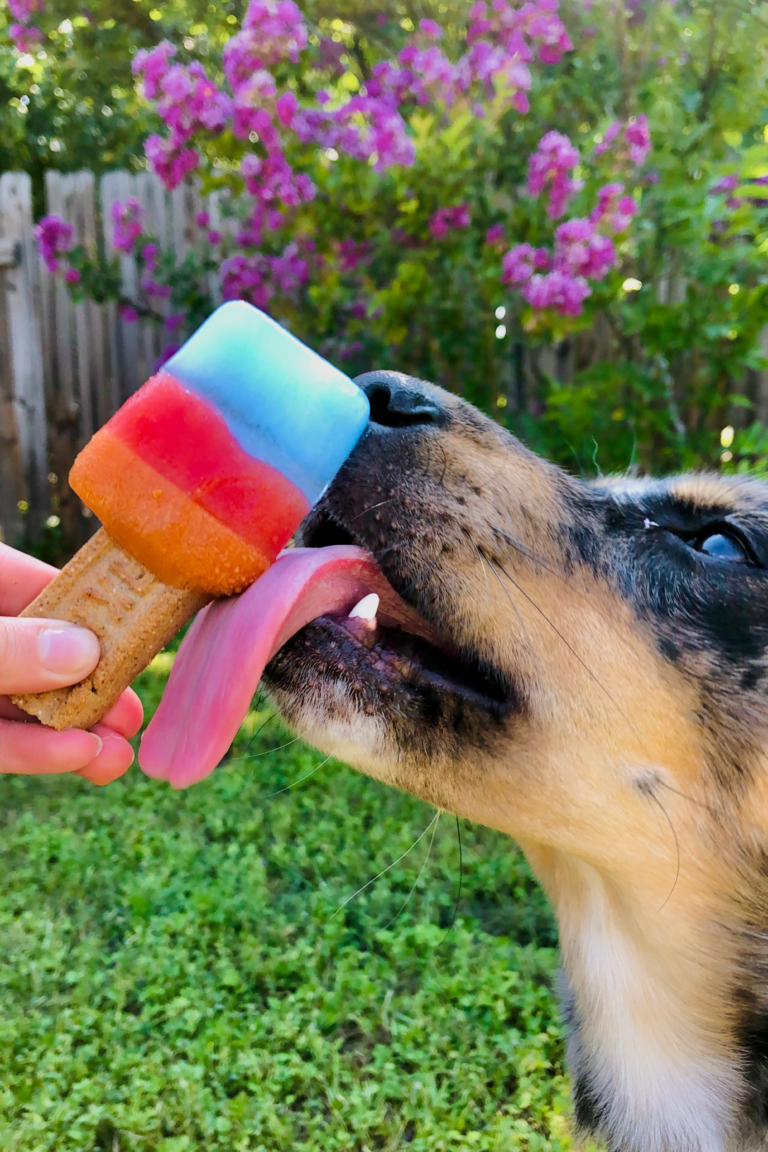
Puro San Antonio Puppy Paletas
This post is courtesy of a guest contributor, Robin Fletcher It’s that time of the year again–the humidity is unbearable and the A/C is never cold enough. You feel bad
Author: Amy Lynn
Amy is the founder of The Dog Guide, and was inspired to start the first one right here in San Antonio after adopting her first dog. In addition to being a dog mom to Texas and Terry, she's also a mom of four, and has lived in San Antonio for over 25 years.









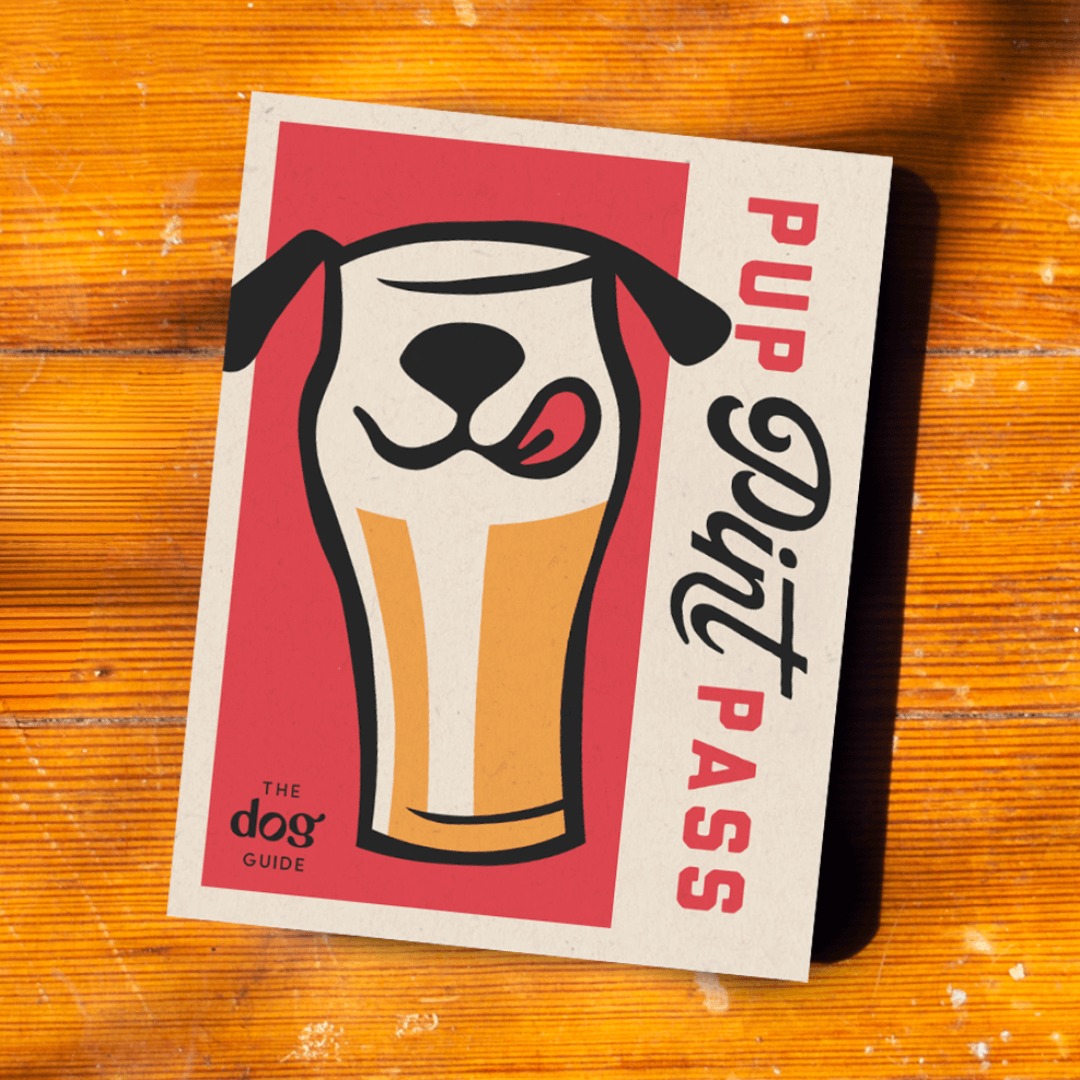
Boxers are NOT good in the heat. They have a shorter snout and have a hard time breathing. They are known to overheat easily and to die from heat exhaustion.